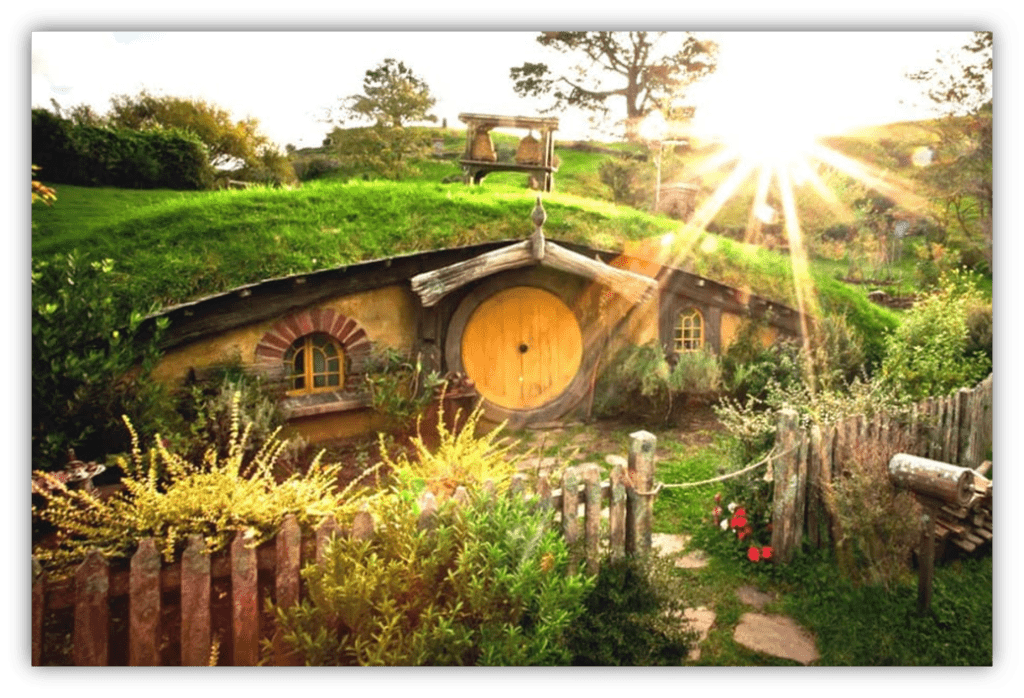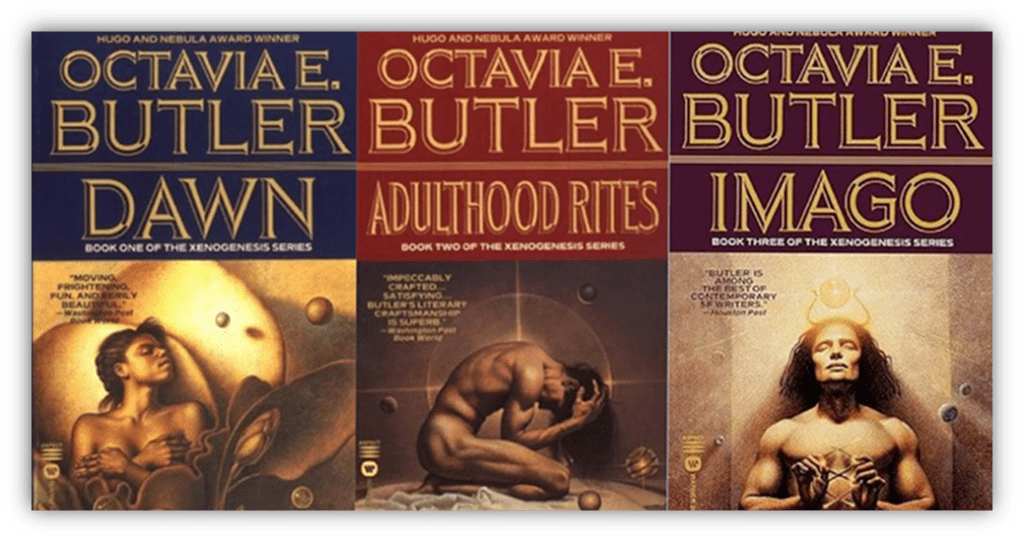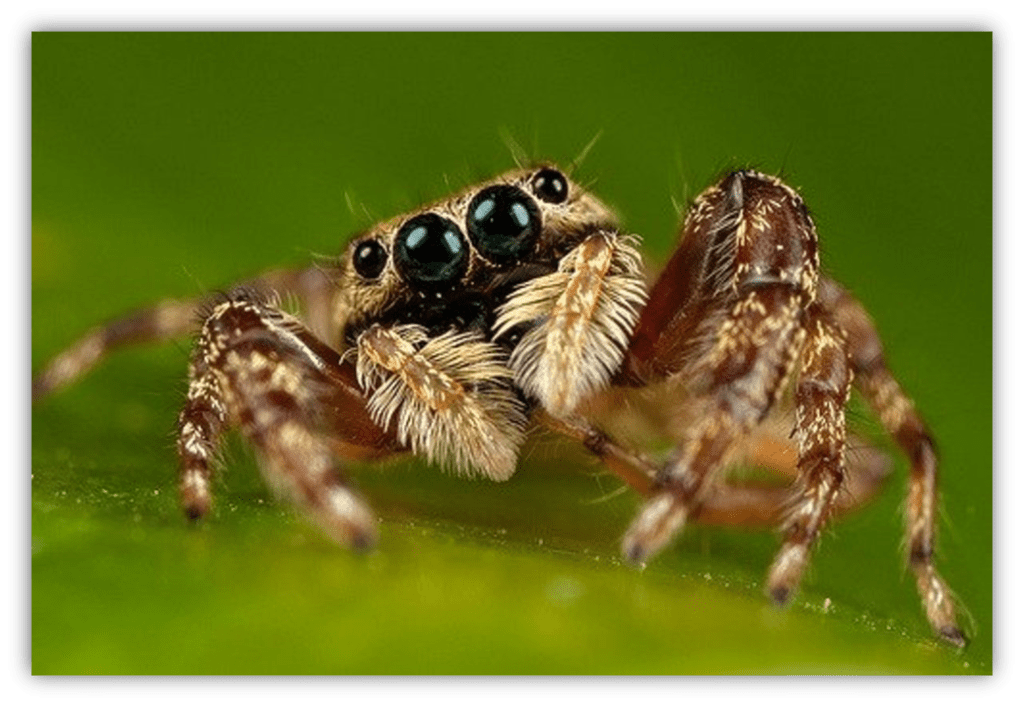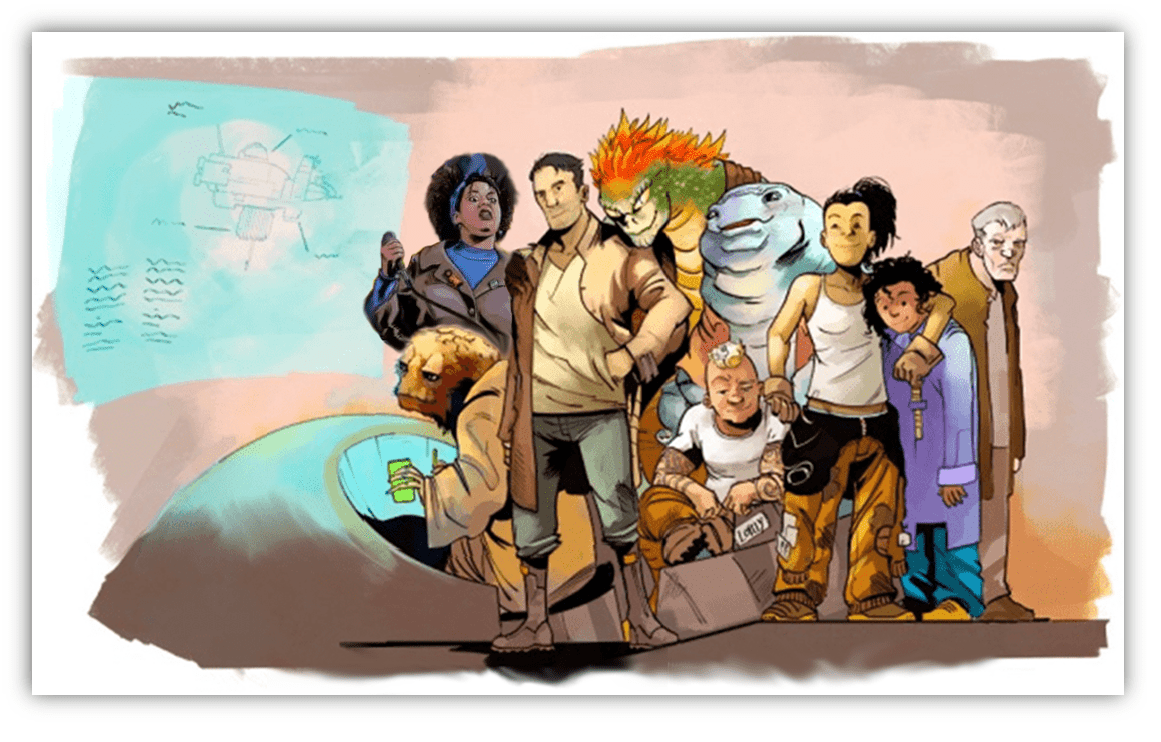I have seen the future of science fiction. And the future is…
Open.
- Open to seeing the “humanity” in all forms of people, including alien species and artificial intelligences
- Open to all forms of romance: straight, queer, cross-species or anything else you can imagine
- Open to understanding the past, present and future in ways that respect everyone
- Open to community, caring for each other, even in the face of stark differences
In this openness, it is warm and inviting – a place you want to live, to feel content, to feel seen and respected and loved.
The concept of an accepting and compassionate future is not new.

You could argue the Shire from the J.R.R. Tolkien’s Lord of the Rings trilogy shared this sense of a warm and welcoming place.

Certainly Star Trek, in all its incarnations, mined this territory.
What has changed more recently is putting the kindness front and center – not as subtext or a tangential element, but as the central meaning the book is trying to convey.
Science fiction, where the radical kindness is the point has taken on the name: hopepunk.
Ok, so while I’m a huge fan of this vein of science fiction, I only recently learn the term hopepunk, so forgive me if I may be throwing it around a bit clunkily. I always called it “warm cup of cocoa” sci-fi.
Wikipedia defines hopepunk as “a subgenre of speculative fiction, conceived of as the opposite of grimdark.”

“Works in the hopepunk subgenre are about the characters fighting for positive change, radical kindness and communal responses to challenges.”

In this way, hopepunk is adjacent to cottagecore and the Danish word hygge – implying a comfort and warmth where you feel content.
Where science fiction for a long time was very straight, white and male (its authors – and therefore its subjects and themes), the growth of non-straight, non-white and non-male authors has made sci-fi relevant again.
Tired stories of men leading the way to save the planet or the universe have given way to women or non-binary individuals – or non-humans – taking action to still save the planet or the universe. But not by military action or heroic violence or scientific breakthroughs – but by changing what it means to be human, by spreading empathy and a sense of common purpose.

Hopepunk is playing the long game – not fighting for an immediate outcome, but creating the world you want to live in.
The world you and I live in can be a horribly de-humanizing place.
Of course, there’s the DMV. Or human-free phone experiences. Your dreadful “mandatory-fun” workplace. Vacations where you feel like cattle herded from one “experience” to the next. Scammers hitting you from every direction…
And that’s not even to mention the heavier burden anyone who’s not a straight white male has to face.

Comments on your looks or how you dress, micro aggressions when your accent is heard, subtle or perhaps even overt hatred because of your sexual preference or gender expression.
If you don’t have the blessing of a great support system, this world can really beat you down.
Wouldn’t you like to get away?
- Wouldn’t you like to live in a world where hatred over who you are does not exist?
- Where your humanity is seen and appreciated at every turn?
- Where differences are celebrated?
Well, hopepunk creates that alternate universe: The wish fulfillment world where you can be fully realized. Well, not you per se, unless you write your own hopepunk science fiction and put yourself in as a character, but people who you may recognize.
And here’s the surprising thing – there is still plenty of conflict that can arise and drive a story. It’s not like if you take away racism, sexism, anti-LGBTQ attitudes, there’s no story to be found. In fact, I frankly find it a lot more illuminating to consider how we can solve major problems of today and tomorrow much more easily when our hatred and stupidity are left behind.
To see what this could look like, consider the examples below:
The Xenogenesis Series (aka Lilith’s Brood series) – Octavia Butler

The term “hopepunk” was coined in 2017 by fantasy author Alexandra Rowland and caught on fast, becoming a dictionary entry in 2019. Octavia Butler’s Xenogenesis series, consisting of Dawn (1987), Adulthood Rites (1988) and Imago (1989) predates the term by about 30 years, but serves as an ur-hopepunk beacon in the blackest midnight of 80’s sci-fi.
To be clear, the hopepunk aesthetic is something that gradually comes into view in this trilogy. Dawn starts with a pretty frightening proposition: a black woman, Lilith Iyapo, awakens imprisoned in a room with no memory how she got there. A terrifying humanoid creature sometimes appears in the room, though it does nothing threatening. Eventually she learns that Earth was destroyed in a nuclear war and Lilith is one of a few humans who was rescued by an alien race known as the Oankali.
The Oankali have three sexes (male, female and ooloi) and have the ability to mutate genetic material at will. The Oankali themselves are a combination of genetic traits from many different species they have encountered, and they would like to add some human genetic traits to their species and welcome humans into their community. But they understand humans have destructive tendencies, and do not wish to take this genetic heritage against the will of a human.
The Oankali compare their need to interbreed with humans with humans’ need to breathe – it is necessary and would be mutually beneficial – humans and Oankali alike could gain strengths and eliminate weaknesses through genetic synergy. Humans for the most part find the Oankali repulsive and most humans rebel against this interbreeding.
The Oankali make Earth habitable again, but there are rival factions of rebel humans in some settlements and joint human-Oankali groups in others. Lilith Iyapo becomes the first human to choose to breed with the Oankali, and the later novels center on her mixed-species children, their challenges and eventual triumphs straddling the human and Oankali worlds.

There’s a lot of widely varying fan art out there imagining what the Oankali look like from Octavia Butler’s description. They are NOT meant to be cute and cuddly by any interpretation. And that’s the point.
The real twist of the Xenogenesis series is that you have the embrace the perspective of the aliens – or at least the human-alien hybrid constructs – to understand this as hopepunk. If you can only see through the eyes of the humans in the book, it looks more like a horror movie. But when you see it from the Oankali perspective, it’s crystal clear.
Oankali rescued humans from extinction and only want to combine both species to the benefit of all involved – a true win-win scenario. The humans in the novels have to first find the empathy to see the Oankali as “human” – that is, one of them, deserving of respect.
And they then have to be willing to surrender their sense that being a “pure” human is inherently valuable. The parallels with racism and miscegenation are right there for the taking, though Octavia Butler is clearly making a much larger point about empathy and being human.

Octavia Butler passed away in 2006 at age 58, like Iain M. Banks, far too young for us to lose such a legend. I think we’ve still got quite a distance to travel to catch up with her rich themes. You may be aware that her novel Kindred was adapted into a Hulu series in 2022.
Really, any book of Octavia’s is a worthwhile pursuit. She doesn’t pull punches, but she is offering a glimpse of a future where empathy and compassion are the foundation of a civilization.
Children of Time Series – Adrian Tchaikovsky
Adrian Tchaikovsky took much of the foundation that Octavia Butler erected through her Xenogenesis series and fashioned it into a space opera.

Like Octavia Butler before him, Tchaikovsky interrogates what it means to be human, even if you really aren’t human.
He does so in his recent book series, which consists of Children of Time (2015), Children of Ruin (2019) and Children of Memory (2022).

A fourth novel in the series is reportedly in the works as well.
Children of Time starts with Dr. Avrana Kern, in orbit around a planet (Kern’s World) that humans are terraforming. She has grand plans to launch a group of monkeys to the planet and release a virus that will give them superior intelligence to build their own civilization – to become a “god” in her own hubristic sense. However, an ecoterrorist group launches an attack that causes the separate launches of the monkeys and the intelligence virus to go awry. Dr. Kern remains in orbit around the planet, in stasis in an escape pod, awakening at times to see if there is any civilizational progress. Over time, signals from Earth stop coming, and there is no sense of progress from the planet either.
Millennia pass, and a broken and battered last group of humans arrive at Kern’s World seeking refuge. What they find is horrifying – there is a thriving civilization on the planet, but it’s not monkeys – it’s jumping spiders, known as Portiids. The humans leave in panic to try to find a different planet.
You see, while the monkeys burned up in the atmosphere, the virus did indeed arrive. Many species were altered by the intelligence virus, but the Portiids were the first to build a civilization and rule over the planet. Much of Children of Time documents their evolution – overcoming and eventually controlling their competitor species, then using those species to their own ends in ingenious ways. Other insects become beasts of burden or livestock. Communication takes place by tapping and vibrating spider webs. Ants and their chemical signals become computers. Eventually, they are able to receive and interpret a repeating signal from Dr. Avrana Kern’s ship in orbit, where she is still alive in deep stasis.
The humans eventually return to fight the spiders for access to the terraformed planet – they are desperate and barbaric. By this point, the spiders are spacefaring creatures themselves. In the ensuing battle, while the humans fight with spirit, they are not ready for the weapon the spiders eventually deploy – a chemical agent to awaken the empathy in humans, so they see the spiders as “one of us” and not a “them” to be defeated.

Actual jumping spider: Awwww. So cute!
Thus ends Children of Time, and the next books in the series follow a team of Portiids and humans exploring other regions of space, learning about other species civilizations – including octopuses from a different partially terraformed planet and other truly alien lifeforms. Eventually, artificial beings are also brought into the great umbrella of cross-species harmony and cooperation.
What Tchaikovsky is pointing to is pretty clear – where do you draw your lines of empathy? If you can consider other humans unworthy of consideration, how can you possibly see an ape, or a cow, or a spider as your equal? But if you can get over your pathetic little ego and have a more welcoming spirit, you can see not just all humans, but all life as “one of us” and therefore deserving of respect on its own terms. It may seem like a lot of work, but there’s the fate of the universe to gain.

Tchaikovsky’s Children of Time series just won the Best Series award at the 81st World Science Fiction Convention in October 2023 in Chengdu, China.
However, there was controversy over four works being excluded from consideration for any awards – apparently a self-censorship by the organization to appease the Chinese government.
Adrian Tchaikovsky retracted his award after learning about the controversy. (We call that “practicing what you preach.”)
Wayfarers Series by Becky Chambers
If you want to find something different, something that is definitionally “hopepunk” in the purest sense, I invite you to discover Becky Chambers.

All four books in her Wayfarers series are space stories at their core, but the focus and emphasis is unlike any books I’ve read. They are not leaning hard into the scientific accuracy of hard sci-fi, but they are plausible.
They are not space operas, though there is some sense of adventure. They are not comedies, though they are funny at times. But they center the empathy and sense of community in a way that seems vital, like we’ve been missing the most important thing all our lives with pointless distractions, and she’s finally bringing us home.
The Wayfarers novels are not a single story, but they live in the same universe, with a few recurring characters as connective tissue between otherwise separate stories.

- The Long Way to a Small, Angry Planet (2014) is another story of a ragtag group of misfits in a ship on a rather extraordinary mission.
What sets it apart is from a standard space opera is;
- The violence is rare and remarkable when it appears
- The romance is plentiful but strictly non-standard – between different alien species, between a human and an AI
- And: The “found family” dynamic is really the core of the novel.
It’s about people from drastically different backgrounds finding common past and common purpose, listening and comforting one another with intention. The story itself is compelling, but the real draw is getting intimate with these lovable oddballs, whose devotion to one another is fierce.


A Closed and Common Orbit (2016) strays further from adventure and tells a smaller and more delicate story.
An artificial intelligence is uploaded into a human body, against all galactic laws. An older couple who are technicians take care of her and help her learn to pass as human, while recounting their origin story on a planet of clone slaves. There’s enough going on to keep the story moving, but at its heart, it’s a story about learning to be human and to protect and defend those you love.

Record of a Spaceborn Few (2018) features a human colony living by old protocols, to the confusion of the galactic community.
For centuries after Earth’s destruction, humans (Exodans) lived in large ships with no resources except that which they could recycle within their closed environment. They learned to live a truly communitarian existence, with everything recycled, upcycled, reused or repurposed, including the dead, and everyone committed to multiple roles to keep their ship functioning and their society alive.
Once they found and joined the galactic community and had access to plentiful resources, most humans left that minimal existence behind, but some maintained that lifestyle in the original ships. The story is that of insiders and outsiders learning about the Exodan way of life, why Exodan people are very insistent on maintaining their way of life when a much easier existence is available at their fingertips.

The Galaxy, and the Ground Within (2021) takes place at a galactic rest stop, where a mother and daughter run a small refueling station.
While three visitors from different alien species are there, an unforeseen accident causes all satellite communication and space travel to be temporarily halted for several days. The mother and daughter try to make their guests feel at home on this lifeless planet, while each of the guests has their own past and preconceived notions to deal with.
Think of it as The Breakfast Club set in space with no human characters. The book primarily consists of conversations, but just like John Hughes’ aforementioned movie, you can make compelling art with a lot of talk and very little action.
The Wayfarers books, and all of Becky Chambers’ fiction, live in this “warm cup of cocoa” vibe, where there can be misunderstandings, but everyone is accepted for who they are, everyone is curious to learn more about those around them, and everyone is doing their absolute best to make their neighbors feel welcome, comfortable and cared for.

(Actual photo of Becky Chambers drinking a warm cup of cocoa.)
Empathy, compassion and community are not secondary – they are the solution to every type of problem. They are the raison d’etre in the Wayfarers books. In the books, there are people who don’t follow this ethos, but they are tertiary at best and outliers.
I feel like hopepunk is really the bee’s knees – it hits that sweet spot for me.
At some point, we need to recognize that science and technology can’t solve all our problems. We need empathy; we need a sense of shared purpose; we need our differences to be seen as a strength. Building a better future may require spacecraft, but even more importantly, it requires us to see the humanity not just in our fellow humans, but in all fellow creatures in this universe.
What have you read – sci-fi or otherwise – that gives you the vibes, that makes you feel seen, loved, understood?
I’d love to hear your recommendations and experiences in the comments.
Let the author know that you liked their article with a “Green Thumb” Upvote!





Interesting stuff! “Grimdark” and “hopepunk” sound more like microgenres of music than literature. Though maybe it reflects a more general trend of niche geekdom in our culture, as video games are labeled with neologisms that sound like bands: “Rougelike,” “Soulslike,” “Metroidvania.”
It’s common for people to really dig into the various works of a genre or microgenre. But for me, whether we’re talking zombie movies, dystopian sci fi books, or metroidvania games–I try to focus on the best of the bunch.
The extent to which a creator can impart the power and purpose of a style or point of view is the extent to which I can appreciate the genre they’re showcasing.
All that is to say, I have built-in reservations for authors that wanna go all in on grimdark cynicism or hopepunk utopianism…but I am confident that the best of the bunch will make me appreciate what the genre has to offer. This article here presents your best of the hopepunk bunch. If you had to pick a “best of the best” as a masterclass representative of the genre done right, which one or two books would you choose?
Generally speaking, the sci-fi world of the 50s into the 80s really could have used an injection of compassion and empathy. Even though the Dune series was written to critique the hero’s tale as authoritarian, it does so mostly implicitly, and in a style that exaggerates cold Rationalist ideals rather than offer an inspiring alternative.
Regarding the inverse attempt, empathy and protection from harm are the central sacred values of the left. Naturally, I think more people should try to tap into their inner bonobo rather than their inner chimp. But I do wonder if a fixation on this idea in speculative fiction will lead to a new set of blind spots with regard to human nature. Maybe the absence of conventional alpha chimps creates an opportunity for abuse by a few bonobo bad actors. Maybe compassion unchecked can lead to coddling, indulgence, and submission to bad faith browbeating.
…and maybe some of the books you named actually talk about this kind of stuff! I have no idea. Just my thoughts upon first reaction. I would be most interested in a book that factors in considerations like that. Any recommendations?
If you want to read something that is definitionally “hopepunk” then you should start with Becky Chambers’ The Long Way to a Small, Angry Planet. If you vibe with her, check out her other stuff.
Octavia Butler is a professor in building worlds that challenge your conceptions. Like I said, Dawn is pre-“hopepunk” by several decades, but you won’t have to look too hard to find the common themes. You will NOT get the warm cup of cocoa vibe from Butler but she will challenge you to expand your sense of humanity.
I finished reading On Earth as It Is on Television from your last article and really enjoyed it, Pauly.
I also checked out Space Opera from the library, but have not started it yet.
Not sure if I will get to any of these here, and have not read anything in this category, but I do have to say that I appreciate the vision of a diverse world in modern sci-fi storytelling in movies and tv shows.
Yay!!!! That’s awesome. Did you enjoy the cat content as much as I did? For me, the cats and the kids made the book. 🙂
The cat content made up a very large portion of my enjoyment of the book, but I loved all major aspects of it. If our cats became capable of communicating with us in English telepathically, I’d probably throw myself through a window.
Have you ever read the Saki short story “Tobermory”? It’s about what happens when a house cat is taught to speak. Jumping out of the window was considered by a few.
https://homepage.ntu.edu.tw/~karchung/Tobermory.pdf
I just read it. Very amusing and also scary. Anyone that thought it was a good idea to teach a cat to speak got what was coming to them.
I have not heard of this genre before, although I am familiar with the work of Octavia Butler. I have a feeling that this could be where I take my next reading journey. The Long way to a Small, Angry Planet sounds like my kind of story. Also, grammar nerd that I am, I love it already for including the comma in the title.
Wonderful!
Not sure if it makes much difference, but none of the Wayfarers books are particularly long. Not novellas, but you could finish one in an engaged weekend. Therefore, it’s not a huge commitment if you’re hesitant but want to take a chance…
The Becky Chambers stuff sounds really interesting. My problem is I have too many books started already, Tom Breihan’s book among them.
I set myself a goal of reading the biographies of all the presidents in order, but then I got to Andrew Jackson. Yes, he had a rough childhood but he’s so thoroughly unlikeable that I’m having a hard time picking the book up again. Is it wrong to skip him and go straight to Martin Van Buren?
Anyway, this has been a great series, Pauly. Nice work!
Thank you. I appreciate it! 😁
But he’s your hometown President, V-dog! I’ve been to the Hermitage a couple of times and even then did not warm up to that old coot. I assume you’ve done you obligatory site visit so you can skip straight to Van Buren IMO.
I’ve been there and the slave quarters are depressing. I’ve also been to Polk’s grave next to the capitol, which is smaller than you’d expect. With your kind permission, it’s on to good ol’ Marty.